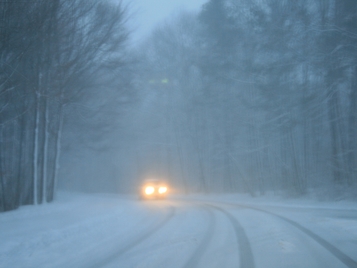 Be prepared for winter!
Winter is almost here. Keep the
following tips from What Every Driver Must Know in
mind to make sure you and your vehicle are prepared for winter emergencies.
- Keep
an emergency safety kit in your vehicle. Make sure to include jumper cables, mobile
phone charger, shovel, tow rope, sand or
kitty litter, flashlight and batteries, first-aid kit, emergency flares,
battery operated radio, nonperishable food (energy bars and water), small tool
kit (including duct tape), blanket and maps.
- Preventive
maintenance prior to the winter season is the best way to ensure safe travel. Regularly
check fluid levels such as power steering, brake, windshield washer and oil.
- Make
sure the antifreeze is strong enough to prevent freezing of the engine and
fresh enough to prevent rust. In cold
weather, you may also want to change the windshield washer fluid to one
containing an antifreezing agent.
- Leave
extra time and drive more slowly when it is foggy, raining or snowing, and
conditions are hazardous. Allow greater
following distance in bad weather. In
cold weather, bridges and overpasses freeze before the road does.
For more information, see
page 35 of The Parent’s
Supervised Driving Guide.
 Never
take risks at the railroad tracks
At
railroad crossings, do not drive through, around or under any crossing gate
while it is down, or being raised or lowered. Wait until the gates have raised,
the signals have stopped flashing and you are sure all tracks are clear.
 At any crossing that does not have a signal or gate, slow down and look both ways. It can be fatal to ignore a signal or try to cross in front of a train. Trains take much longer to stop than automobiles – up to a mile in most cases.
Be careful not to get "trapped" on railroad tracks by a line of vehicles backed up by a traffic signal. Never cross railroad tracks unless you are certain there is enough space for your vehicle beyond the tracks or the crossing gate.
|
|